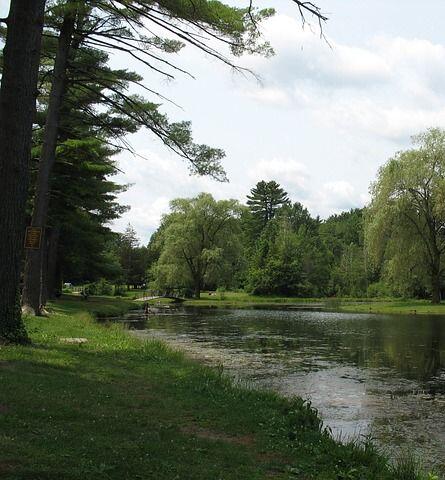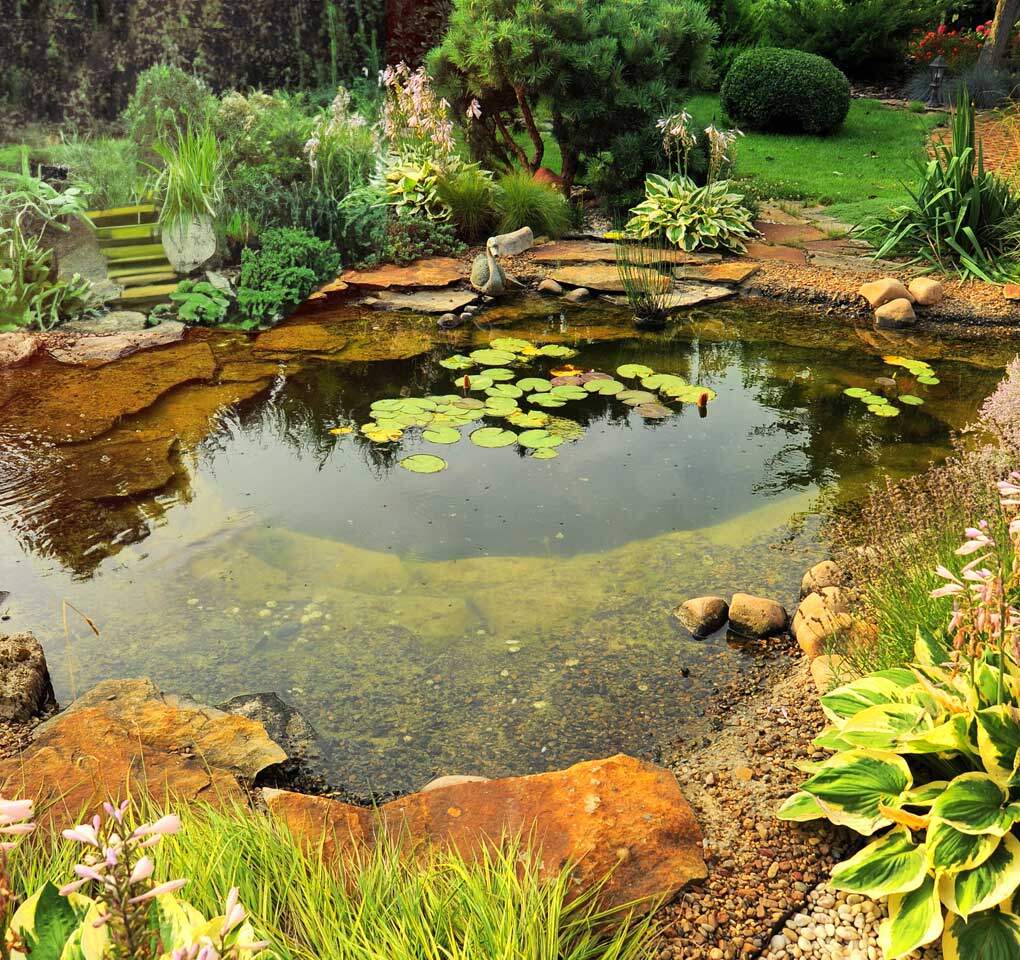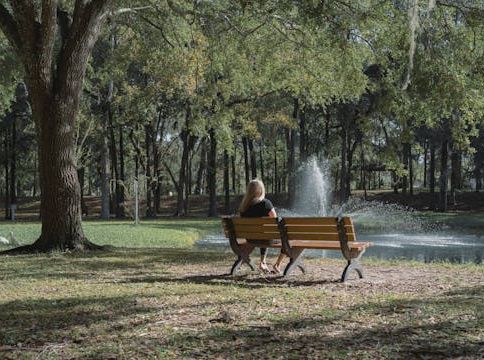Nearly every commercial and residential development has at least one stormwater management or retention pond. Stormwater management ponds are designed to collect, store and purify water as it runs through the landscape from rainwater, snow melt or human water use. Properly maintained stormwater management ponds are beautiful additions to the landscape.
Unfortunately many of these ponds have become unsightly nuisances in the neighborhood. Many are overloaded with nutrients like phosphate and nitrate, are coated in algae, invaded by geese and give off foul odors. Fortunately there are multiple things that you and your neighbors can do to clean up the pond, improve the water quality and perhaps save you money.
Below is a list of the many simple things that you can do at home that will help improve the water quality of not only the stormwater pond in your neighborhood but the streams, rivers and lakes too.
- Inside the home you can use energy and water efficient appliances to conserve the amount of water that would need to be treated.
- Use phosphate free soaps and detergents for bathing, cleaning, doing laundry and washing your car.
- Instead of washing your car at home, take it to a car wash facility. If you can’t take it to a car wash use a high pressure hose nozzle to conserve water and wash your car on the lawn to allow the water to be soaked up and purified by the soil.
- Pick up your pet waste. Nearly 20 percent of bacteria found in our natural waterways come from pet waste.
- Properly dispose of all garbage and chemicals instead of dumping them down storm drains. Contact your local Town hall to learn where to properly dispose chemicals, paints and electronics.
- Avoid the use of fertilizers or pesticides in your yard. Fertilizers contain high amounts of phosphates and nitrates which are the key ingredients that algae and aquatic plants thrive on. If you have to use fertilizer have your soil tested to see exactly what it is missing and use targeted applications of fertilizer. Your local Soil and Water Conservation District can help you test your soil as well as offer you alternatives to pesticides. Many pesticides are absolutely lethal to aquatic environments even in small doses. A pond without fish is still a living ecosystem that can be destroyed by pesticides.
- Control erosion in your own yard. Exposed soil is subject to washing away and building up in stormwater ponds and other aquatic environments. Plant areas with disturbed soils as soon as possible and/or cover the exposed soil with mulch. These areas include garden beds as well as edges of the driveway or that spot in your yard that the mailman always drives over.
- Add rain barrels to your roof drain spouts to collect water to use in your yard later. Adding a rain garden to your yard will act as your own mini water collection and purifying system full of beautiful colors.
- Help control the spread of non-native and invasive species. Non-native species generally do not have a natural control mechanism in the area it was introduced and can lead to dramatic and costly consequences. These species are considered invasive once they have over-crowded or outcompeted native species in the area, have no natural predators or controls, and propagate or reproduce rapidly. Instead of buying a shrub or flower from another country ask your local garden center what is a comparable native plant. Avoid transporting firewood more than 50 miles from its original location. Empty boat live wells and remove any weeds from boats and their trailers before leaving the body of water they were in. Never introduce any plant, bug or animal into an environment that it did not come from, like the goldfish won at the carnival.
- If your property contains a part of the pond’s edge, don’t mow right up to the water. Also mow away from the pond to avoid grass clippings from decaying in the pond. Instead leave at least three to five feet of taller grasses and wildflowers. The tall grasses and wildflowers help to stabilize the shore edge, act as a prefilter to the pond by collecting sediments and hinder geese from freely entering and exiting the pond. The tall grasses also provide a habitat for frogs and predatory insects that naturally control mosquito populations.
In addition to the simple things you can do at home, there are also things you can do in your neighborhood to help.
- Pick up pet waste. It seems obvious but many people think that because they are in a natural environment, like a park or hiking trail, (or they don’t like their neighbor) that they can leave their pet waste. Pet waste is high in ammonia and contributes to water quality issues.
- Don’t feed the wildlife. Sure it’s cute when little Jimmy feeds the ducks but that is only teaching the ducks (and little Jimmy) bad habits. Feeding wildlife encourages them to use areas we don’t want them to and to become bold and fearless around humans which can be dangerous for both the animal and humans. Besides, enriched white flour and stale cheese puffs are hardly good for us let alone wild animals.
- Control invasive species. Contact your local conservation office for a list of invasive species in your area and how to control them. Never add plants, bugs, fish or other animals to a body of water unless it came out of that body of water. Even though ponds and lakes may contain the same species of fish they may not contain the same bacteria, microscopic insects or possible viruses that are on the fish.
- Encourage your neighbors or whoever is in charge of mowing around the pond to leave at least 3 to 5 feet of un-mowed vegetation. If aesthetics are of concern, encourage planting native flowering pond plants around the edge. Create a collection of funds for a community planting party or bring the idea up at your next homeowners association meeting.
- To speed up the clean up effort or get an assessment of the pond, talk to your neighbors about hiring a professional pond service company such as National Pond Service to determine the best stormwater and retention pond management practices specific to the pond in your neighborhood.






